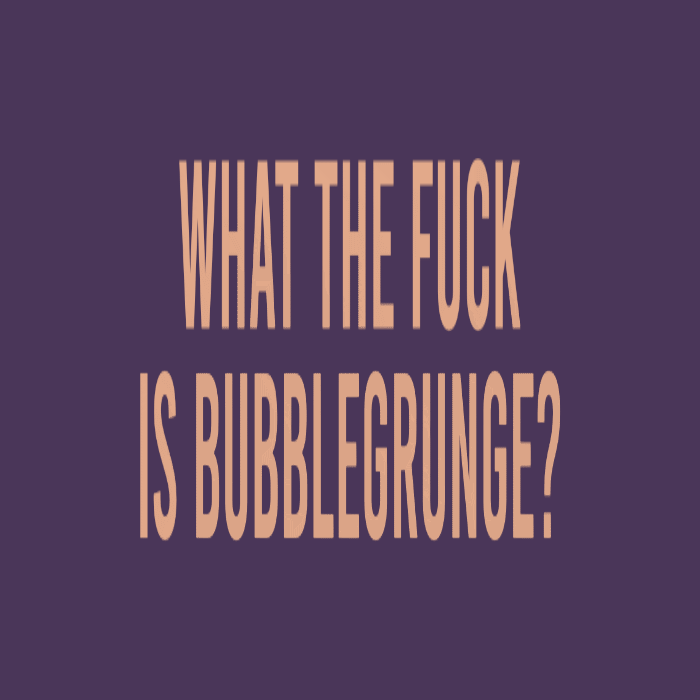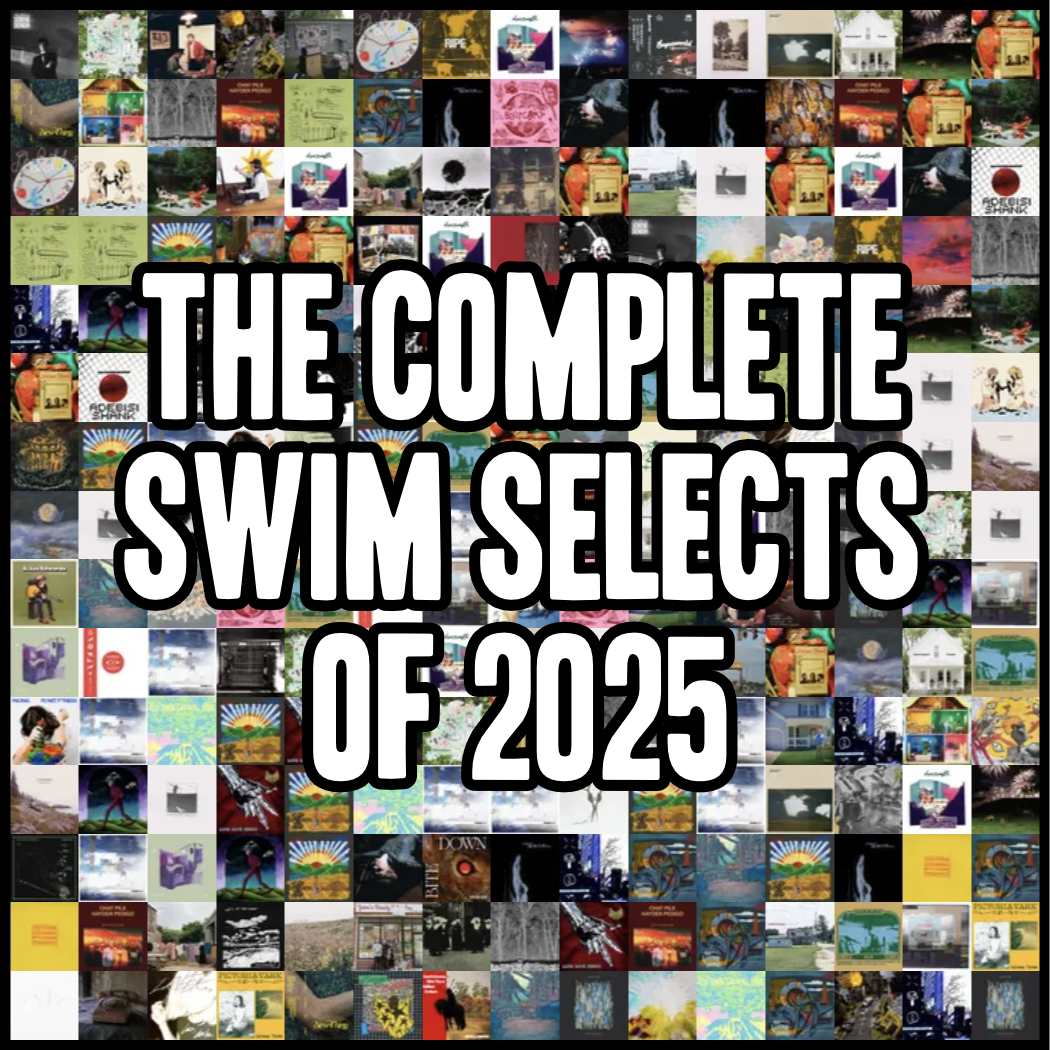BURSTING THE BUBBLE: AN INVESTIGATION INTO BUBBLEGRUNGE
/Wednesday December 1st was a Big Day For Annoying People. If you’re reading this, I can assume that you’re already aware of its significance, but on the off chance that you’re not, it was Spotify Wrapped, the day that good little Spotify users everywhere woke up to find their yearly listening history compiled into a brightly-colored slideshow of stats. Along with some new features (Have you ever wondered which song would play over the opening credits in a movie of your life, or what color your “audio aura” is?) and some cringey, shoehorned-in buzzwords du jour (“While everyone else was trying to figure out what an NFT is, you were slaying 2021 with your main character vibes!”), were the traditional Spotify Wrapped presents we’ve come to expect-- a playlist of your 100 most-played songs of the year, as well as a ranking of your top 5 artists and genres. The latter category is what I want to focus on here. My own Spotify Wrapped raised a notable question-- no, not “did I really listen to 11 episodes of True Anon in one day?” although I did ask myself that. I, like many other Spotify users, took a look at my top 5 genres laid out in that disgusting “graphic design is my passion” font and asked, “What in the goddamn hell is ‘bubblegrunge?’”
My first encounter with the term ‘bubblegrunge’ was about a week before Spotify Wrapped on the application Stats For Spotify. I assumed it was one of those seemingly algorithm-generated music genres like ‘escape room’-- a similarly puzzling item on my top genres list from last year. On the day that Spotify Wrapped came out, it seemed like everyone on my Twitter feed was both trying to pin down a definition of the genre and ripping it to shreds. A quick glance at the tweets from music fans with bubblegrunge in their top 5 genres and those from artists who’d had the bubblegrunge label thrust upon them initially led me (and others) to believe that it was corporate streaming platform-speak for “pop-punk sung by a woman,” but I decided to investigate further.
Tracking “bubblegrunge” as a search term on Google Trends revealed a sharp uptick in google searches on December 1st, peaking at around 11:00 am (presumably shortly after most Spotify users checked their Spotify Wrapped). When I googled the term a few hours after its peak popularity, I found the following Urban Dictionary definition from 2013:
I assumed that this definition was somewhat obsolete by 2021’s standards. I’ve listened to almost no radio-friendly 90s/early 00s grunge-pop of this sort recently, so if this were the definition that Spotify was working with, it wouldn’t make much sense data-wise for the genre to show up on my year-end list. Most of the artists I’d been seeing in the lists of people with bubblegrunge as one of their top genres were bands that blended modern pop-punk with elements of 90s garage rock nostalgia-- think Kississippi, Charly Bliss, and Diet Cig. I wondered if, in this context, bubblegrunge might refer to what illuminati hotties frontwoman Sarah Tudzin has coined “tenderpunk,” defined by its irreverent yet affectionate infusion of DIY punk. “There’s a sweeter vulnerability to it, and then there’s a tongue-in-cheek, give-no-fucks attitude,” Tudzin explained in a 2019 interview with SF Weekly.
I searched “bubblegrunge” on Spotify. The first result was Spotify’s official Sound of Bubblegrunge playlist. Among the related playlists linked in its description were ones dedicated to Indie Pop, Midwest Emo, 5th Wave Emo, Philly Indie, and a playlist exclusively dedicated to female-fronted bands in the bubblegrunge genre. This did little to disprove my initial write-off of bubblegrunge as just another attempt from the music streaming industrial complex to push “female-fronted” as its own musical genre.
Returning to the Sounds of Bubblegrunge playlist, I saw that many of the artists featured on it were ones that I’d expected based on previous context clues. Each of the aforementioned artists had at least one song on the playlist, and other artists with overlapping fanbases were featured prominently as well. Generally, it seemed like a convergence of bedroom pop (Cherry Glazerr, Adult Mom, Sir Babygirl), emo (Slaughter Beach Dog, Radiator Hospital, Home Is Where), pop-punk (Pinkshift, Oceanator, Antarctigo Vespucci), and some folk-infused alt-pop (Lucy Dacus, Waxahatchee, Samia). There was also some straightforward guitar rock like Snail Mail, some more experimental cuts from artists like Spirit of the Beehive, and even a few ska tracks from bands like Bomb The Music Industry and We Are The Union. For the most part, all of the songs included seemed to be from the 2010s or early 2020s. Other than that, and the tendency toward the broad umbrella category of “indie,” I saw little cohesion that would warrant grouping these songs into a defined genre or subgenre. A similar algorithmically-generated playlist titled Intro to Bubblegrunge had a link to Sounds of Bubblegrunge in its description and seemed to offer a smaller sample of bubblegrunge highlights, though its content seemed somewhat indistinguishable from one of the algorithm’s standard indie rock playlists.
I decided that if I was going to do a deep dive into the genre, I had to also look into the users’ interpretations of the ‘bubblegrunge’ label. One of the first user-curated playlists to come up was one that mainly consisted of what I might jokingly refer to as “tiktokcore”-- I’d use the term not as a genre descriptor, so much as a means of categorizing music associated with a certain platform, grouping together artists like beabadoobee and girl in red. Much of the playlist also included big-name contemporary pop artists like Solange and Lorde, as well as some 90s shoegaze icons like Cocteau Twins and Mazzy Star. Once again, I saw very little cohesion within the genre label; the main commonality tying together all the music I was encountering was that most of it would be at home on a playlist called something like “songs for pretending that you’re the main character.” The bubblegrunge for beginners playlist was a bit more streamlined-- partly by virtue of its brevity, at least compared to the other bubblegrunge playlists that clocked in at 10+ hours with tracklists in the triple digits --and had a focus on late-2010s/early 2020s pop-punk and emo. This playlist, which called bubblegrunge “the best genre!” had a similar blend of emo, indie rock, and tiktok-adjacent alt-pop, with a focus on female vocals. Had there been more inclusion of earlier acts— ones that have influenced the sound of contemporary bubblegrunge —the case could be made for artists like Letters to Cleo, Veruca Salt, and Juliana Hatfield to be called bubblegrunge pioneers.
Though a decent number of non-female fronted acts were featured on bubblegrunge playlists, I was feeling a certain frustration with the “genre,” not unlike the frustration I feel towards the “sad girl indie” movement in music (many of the recommended playlists in featured below the bubblegrunge playlists I checked out were ones along the lines of Spotify’s sad girl starter pack). Much has already been written about the subtle sexism of the “sad girl” label and how it casts a limiting, two-dimensional view of female musicians and their work. Several of the so-called “sad girls” of indie music have publicly criticized the label. In a 2017 interview, Mitski confronted the perception of her as a “fevered priestess,” calling out the ways in which public discussion of female musicians often implicitly strips them of their ownership over their work and disregards their intentionality and technical skill. In a tweet from earlier this year, Lucy Dacus expressed her qualms with “sad girl indie”-- how it often exploits female pain, flattens complex emotional expression by slapping on the vague label of “sadness,” and pushes a harmful narrative that equates womanhood with suffering.
I know that on the surface, it may seem hypocritical of me to point to the inclusion of “sad girl indie” artists like Soccer Mommy and Indigo De Souza on bubblegrunge playlists as my reason for finding the two genre labels similarly frustrating. In doing so, aren’t I feeding into the “women-as-genre” propaganda? Not to mention the various non-female voices included on the bubblegrunge playlists I’ve come across in my investigation. Still, between the cutesy genre name and the algorithmic emphasis on female vocalists, it’s hard not to be skeptical. The other commonalities that make the argument for bubblegrunge to be considered a “real” genre of music paint with a broad brush at best (“post-2010 indie guitar-led pop-rock” is pretty vague criteria).
This is not to entirely disregard newer music genres as illegitimate-- if someone said the word “hyperpop” to you three years ago, would you have any idea what they were talking about? New genres arise all the time as music evolves-- my issue isn’t with the newness, but with the attempt to put a name to a category that does not exist. What “bubblegrunge” really reveals is how detached corporate streaming platforms are from the artists that they’re featuring (and grossly underpaying). I’m not the first to point out that Spotify Wrapped is essentially a brand’s approximation of personal connection-- they made you a personalized mixtape; look how well they know their artists and users! When they try to put a name to a genre that isn’t really a genre at all, it’s nothing more than a lame attempt to homogenize and generalize a vast variety of artists, disregarding their creative and sonic diversity. Bottom line: corporations don’t define music, musicians do.
Grace Robins-Somerville is a writer from Brooklyn, New York. You can find her on Instagram @grace_roso and on Twitter @grace_roso.






